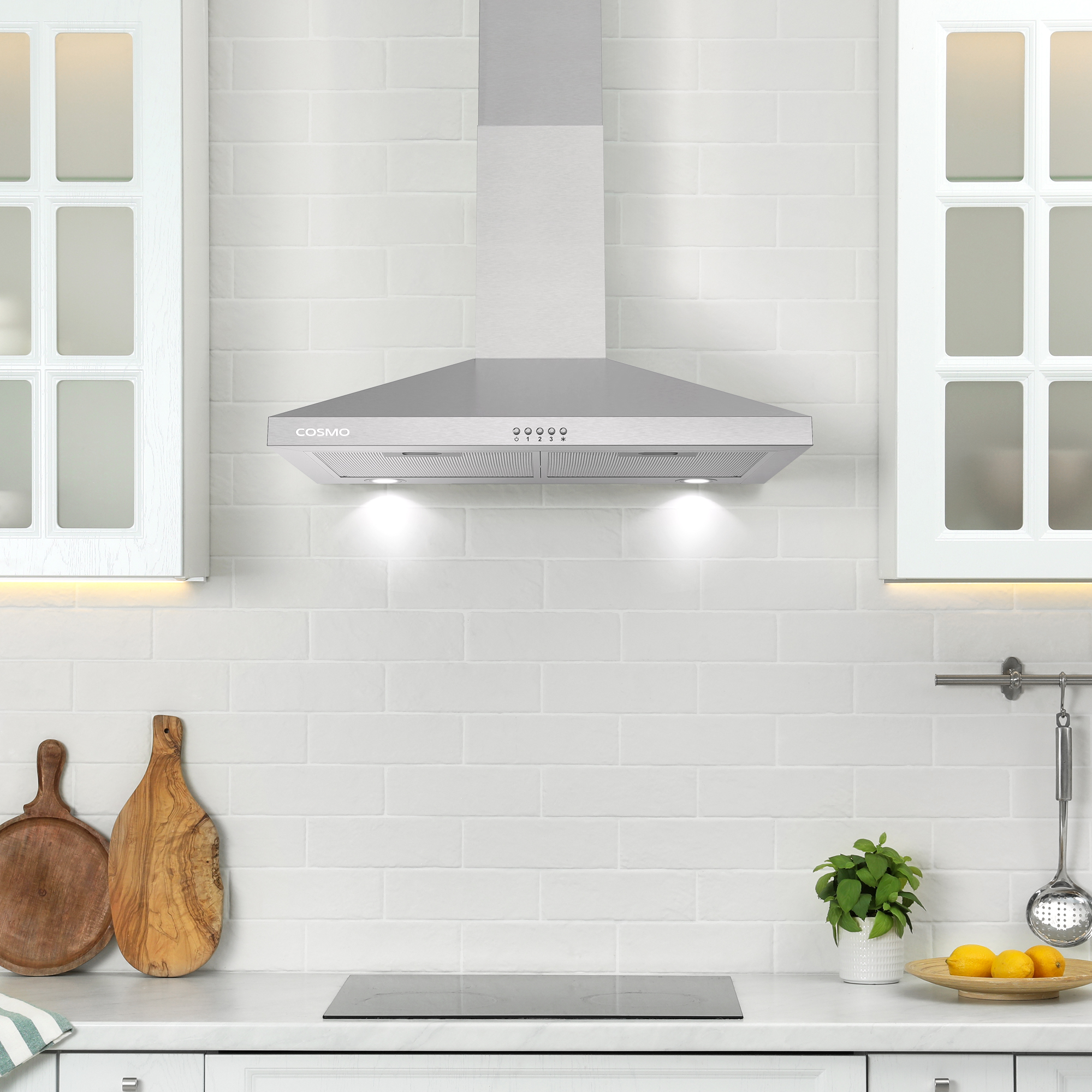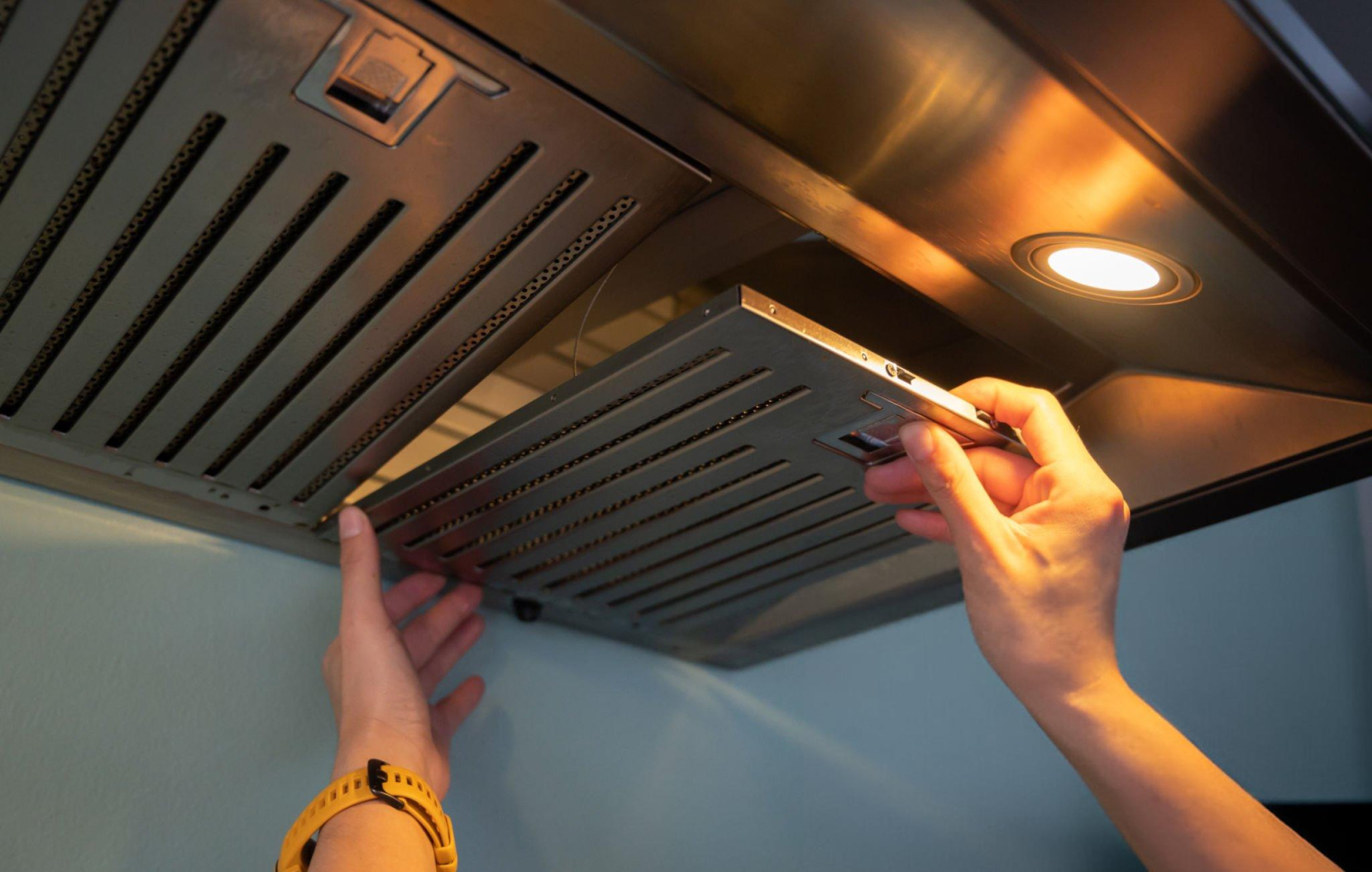The COS-63024P Wall Mount Range Hood: Compact Power for 30-Inch Cooking Spaces
Wall mount range hoods provide the ventilation performance your kitchen needs while creating a clean, integrated appearance above your cooktop. The COS-63024P delivers effective smoke and odor removal in a 30-inch profile that works perfectly with standard cooktop sizes. With three fan speeds, rear LED lighting, and multi-layer aluminum mesh filters, this range hood handles everyday cooking tasks while maintaining quiet operation that won’t disrupt your kitchen conversations. Designed for wall mount installation above cooktops positioned against walls, the COS-63024P combines practical functionality with straightforward operation. The push button controls make adjusting fan speed and lighting simple, while the brushed stainless steel construction coordinates beautifully with other kitchen appliances. For homeowners seeking reliable ventilation without complexity or excessive noise, this range hood provides essential performance at an accessible price point. Wall Mount Design for Traditional Kitchen Layouts Wall mount range hoods attach directly to the wall above your cooktop, providing dedicated ventilation for cooking surfaces positioned against walls rather than in islands. This installation method works with the majority of home kitchen layouts where ranges or cooktops sit in traditional locations. The 30-inch width matches standard cooktop sizes perfectly, providing adequate coverage for most four-burner configurations. Proper sizing ensures the range hood captures cooking byproducts effectively rather than allowing them to escape into your kitchen air. Wall mounting creates a finished, integrated appearance that enhances your kitchen’s overall design. The range hood becomes a deliberate design element rather than an afterthought, contributing to your kitchen’s cohesive aesthetic. Installation height flexibility allows positioning the hood at the optimal distance above your cooktop based on manufacturer recommendations and your specific cooking needs. Proper height ensures effective capture while maintaining safe clearances from heat sources. The chimney-style design extends from the hood to your ceiling, concealing ductwork while creating clean vertical lines. This traditional range hood silhouette works well with various kitchen styles from contemporary to transitional. Three-Speed Ventilation for Variable Cooking Needs The COS-63024P features three fan speeds that allow you to match ventilation power to your cooking intensity. This variable control means you’re not locked into full-power operation for simple tasks that produce minimal smoke or steam. Low speed provides gentle ventilation for light cooking activities like warming food, melting butter, or sautéing vegetables at moderate heat. This setting maintains air circulation without excessive noise or energy consumption. Medium speed handles most everyday cooking tasks effectively, from boiling pasta to cooking proteins at normal temperatures. This middle setting balances ventilation effectiveness with reasonable noise levels for comfortable kitchen use. High speed delivers maximum extraction power for demanding cooking situations like high-heat searing, frying, or any cooking that produces significant smoke or strong odors. Reserve this setting for when you really need it to minimize noise during regular cooking. Variable speed control helps reduce energy consumption by allowing you to use only the power you actually need. Running on low or medium speed when high isn’t necessary saves electricity while extending fan motor life. The ability to adjust ventilation based on cooking intensity makes the range hood more pleasant to use regularly. When you can control noise levels and power consumption, you’re more likely to actually use ventilation for all cooking rather than avoiding it during light tasks. Push Button Controls for Straightforward Operation Simple push button controls make operating the COS-63024P intuitive without requiring digital interfaces or complicated programming. Physical buttons provide clear tactile feedback and visual confirmation of settings. Separate buttons for each function prevent accidentally changing multiple settings when you just want to adjust one thing. Individual controls for fan speeds and lighting make operation predictable and user-friendly. The button layout positions controls for easy access during cooking without interfering with cookware placement or requiring you to stop cooking tasks. Convenient control location encourages regular use of ventilation features. Visual indicators show which settings are active, preventing confusion about whether the fan is running or which speed is selected. Clear feedback helps you operate the range hood confidently without guesswork. Reliable mechanical switches in push button controls typically last longer and require less maintenance than touch-sensitive interfaces. The straightforward technology means fewer potential failure points over years of regular use. Easy cleaning around push buttons prevents grease buildup that can affect operation. The button design resists accumulation of cooking residue that might stick switches or create unsightly buildup. Rear LED Lighting for Task Illumination Two rear LED lights mounted on the back of the range hood provide task lighting that illuminates your cooking surface from above. This positioning helps light reach the cooking area effectively while the hood structure shields your eyes from direct glare. LED technology offers significant advantages over traditional incandescent bulbs, including much longer lifespan that reduces the frequency of bulb replacements. Quality LED bulbs can last many years under normal use, minimizing maintenance requirements. Energy efficiency of LED lighting means lower electricity consumption compared to incandescent alternatives. While lighting represents a small portion of total energy use, efficient LEDs reduce operating costs while providing superior illumination quality. Cool operation prevents excessive heat generation that can make kitchens uncomfortable during extended cooking sessions. LED bulbs produce minimal heat compared to incandescent options, keeping your kitchen cooler. Bright, clear light helps you monitor cooking progress accurately, check food doneness, and perform detailed prep work safely. Good task lighting reduces eye strain while improving cooking accuracy and safety. The rear mounting position directs light forward onto the cooking surface rather than into your eyes. This thoughtful design provides effective illumination where you need it without creating uncomfortable glare. Multi-Layer Aluminum Mesh Filters for Grease Capture The COS-63024P uses two multi-layer aluminum mesh filters that capture grease and cooking particles from the air before they can accumulate in ductwork or escape into your kitchen. These filters provide the first line of defense in maintaining clean kitchen air. Multi-layer construction creates multiple opportunities for grease capture as air passes through the filter mesh. This layered approach improves filtration efficiency compared to single-layer alternatives. Aluminum mesh resists corrosion and maintains


